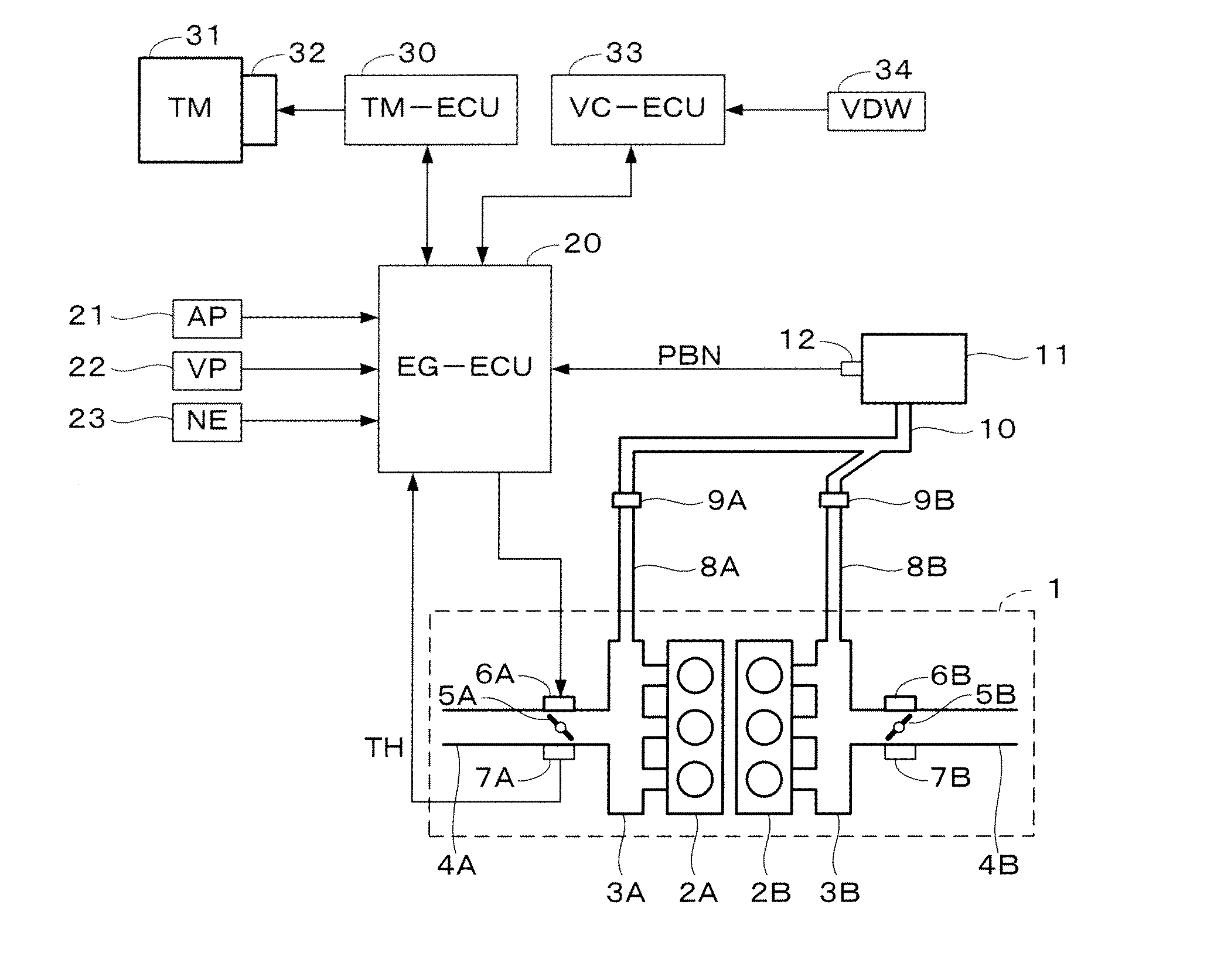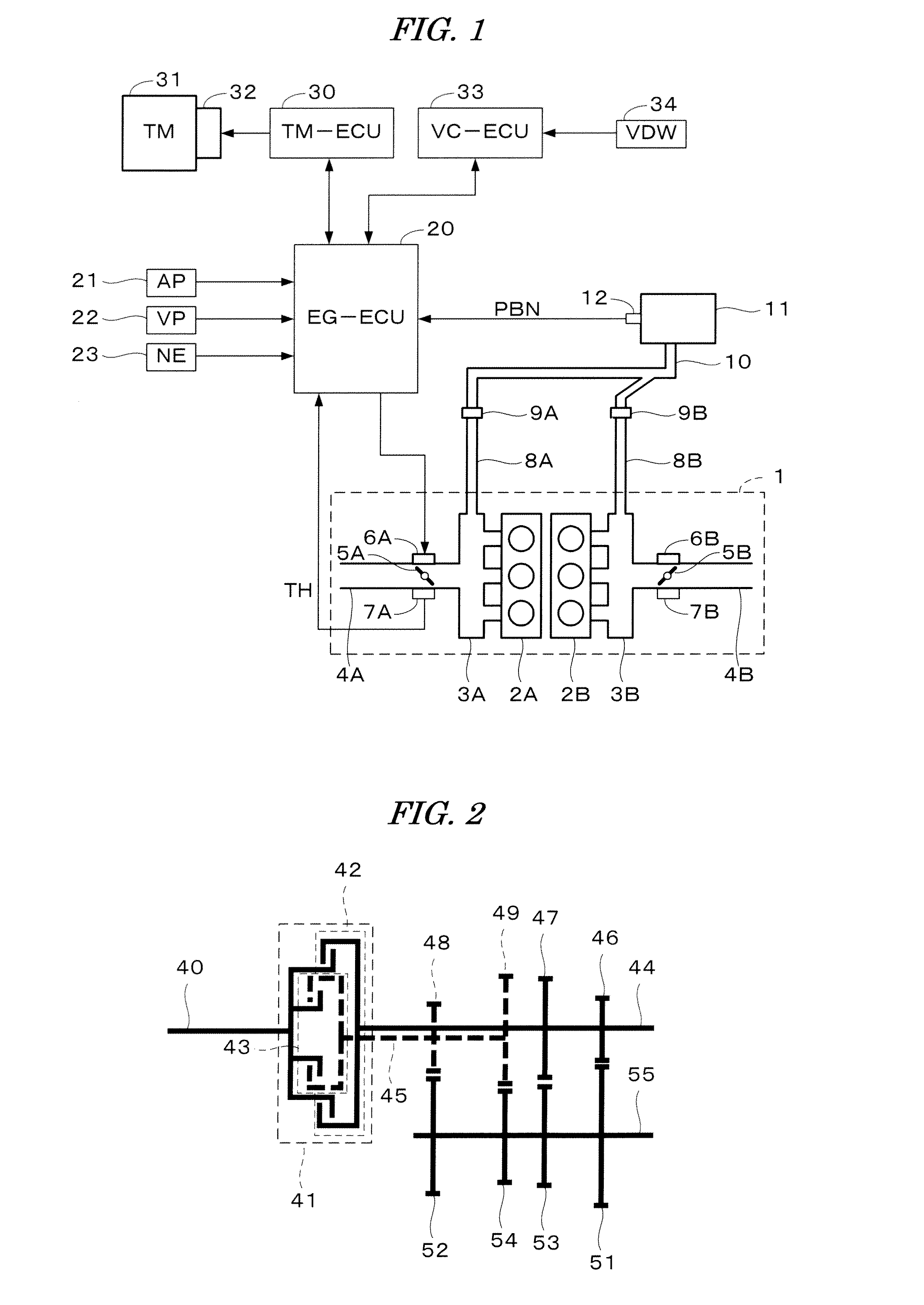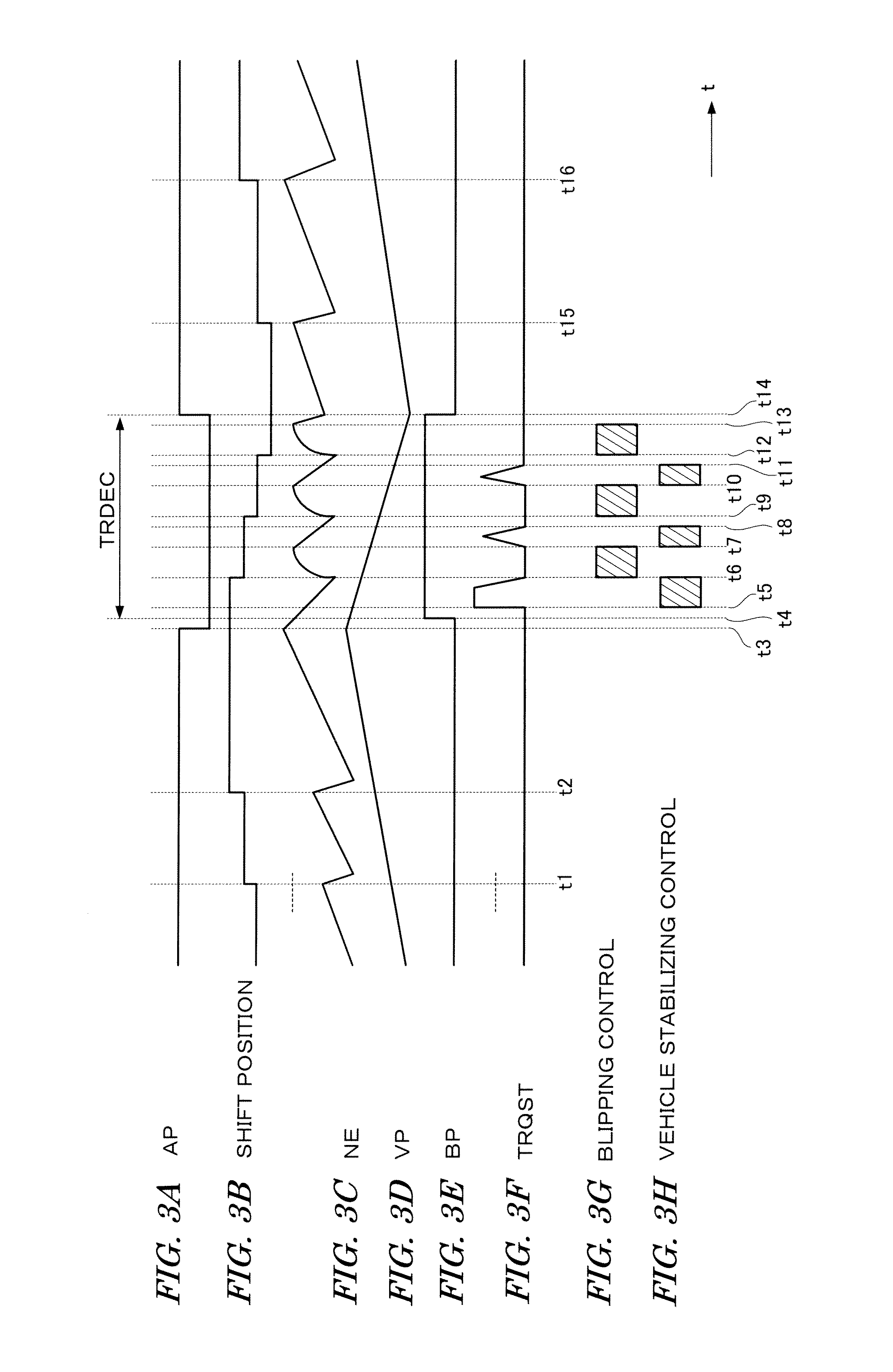Control system for internal combustion engine
a control system and internal combustion engine technology, applied in the direction of electric control, brake systems, instruments, etc., can solve the problems of engine output increase control upon vehicle deceleration, insufficient negative pressure, and inability to solve the problem of engine output increase control, etc., to achieve the effect of reducing the pressure parameter
- Summary
- Abstract
- Description
- Claims
- Application Information
AI Technical Summary
Benefits of technology
Problems solved by technology
Method used
Image
Examples
Embodiment Construction
[0024]Preferred embodiments of the present invention will now be described with reference to the drawings.
[0025]FIG. 1 shows a configuration of an internal combustion engine and a transmission mechanism for driving a vehicle according to one embodiment of the present invention and a control system therefor. A V-type six-cylinder internal combustion engine (hereinafter referred to as “engine”) 1 has a first bank 2A provided with #1-#3 cylinders (first cylinder group) and a second bank 2B provided with #4-#6 cylinders (second cylinder group).
[0026]An intake system corresponding to the first bank 2A includes a first chamber 3A, a first intake passage 4A, and branch passages connecting the first chamber 3A to #1-#3 cylinders. The first intake passage 4A is provided with a first throttle valve 5A. The first throttle valve 5A is provided with a first throttle valve opening sensor 7A for detecting an opening of the throttle valve 5A, and the detection signal of the sensor 7A is supplied to...
PUM
 Login to View More
Login to View More Abstract
Description
Claims
Application Information
 Login to View More
Login to View More - R&D
- Intellectual Property
- Life Sciences
- Materials
- Tech Scout
- Unparalleled Data Quality
- Higher Quality Content
- 60% Fewer Hallucinations
Browse by: Latest US Patents, China's latest patents, Technical Efficacy Thesaurus, Application Domain, Technology Topic, Popular Technical Reports.
© 2025 PatSnap. All rights reserved.Legal|Privacy policy|Modern Slavery Act Transparency Statement|Sitemap|About US| Contact US: help@patsnap.com



